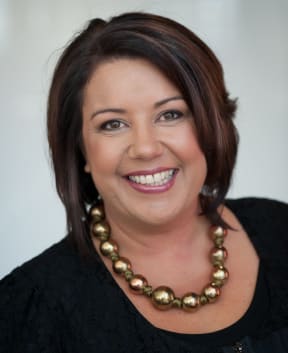The Government is to set up a database of at-risk children and give teachers and doctors training to recognise signs of abuse as part of its plan to tackle New Zealand's high rate of child abuse.
The White Paper on Vulnerable Children, released by Social Development Minister Paula Bennett on Thursday, has taken months of consultation and incorporated thousands of submissions.

Social Development Minister Paula Bennett. Photo: NZ GOVERNMENT
The Government is proposing to train all doctors and teachers so they can tell whether a child is being abused.
There are plans to set up a database of all at-risk children allowing agencies, social workers, schools and health professionals to share information on a particular child.
Teachers, doctors, community groups and members of the public will be encouraged to contact a new child protection line. That information will then go into nationwide database.
A profiling system will identify children according to risk, and they will then be colour-coded accordingly. Adults who have previously neglected or abused children will also be red-flagged.
Paula Bennett says in many cases of extreme abuse, a range of people held some information but no one put all the pieces together. The minister says there will be different levels of access to information on the database and access will be monitored.
"A paediatrician in (accident and emergency) will be able to see the whole file," she told Radio New Zealand's Nine to Noon programme on Thursday.
"In a school, it might be just the principal that's got access and they could just see the child and whether or not they've got a flag of concern next to them, and that will then determine how they respond."
Mandatory reporting will not be introduced, though a phone line will be set up for people to call if they are worried about friends or neighbours. Mrs Bennett said she looked at mandatory reporting systems overseas and found problems, including agencies being swamped with over-reporting of cases.
Mrs Bennett is guaranteeing the security of the information. Government agencies and some community groups will have access, but there will be penalties for misuse.
In other measures, people working directly with children will be screened through a legislated vetting process and social workers will be encouraged to register with the Social Workers Registration Board.
Chief executives of Social Development, Health, Justice, Police, Housing and Te Puni Kokiri will be jointly accountable for achieving results for all vulnerable children, while regional directors and children's teams will coordinate individualised responses locally.
About $20 million has been set aside, initially, to implement the plans. The Government will introduce a bill on the measures and bring in tougher penalties for child abusers.
Paula Bennett says poverty is no excuse, and she has known many people living in difficult financial circumstances who have never abused or neglected their children.
She acknowledges that more social workers will need to be trained and employed to staff the new child protection initiatives.
Social services agency Child, Youth and Family says it will be able to cope with any extra work created. Chief social worker Paul Nixon told Radio New Zealand's Checkpoint programme this can be handled by drawing in capacity from other non-government organisations involved in the care of vulnerable children.
Information sharing 'crucial'
The Children's Commissioner says the focus in the Government's paper on vulnerable children on local collaboration and information sharing is key to effective long-term care and protection.
Russel Wills told Radio New Zealand's Checkpoint the plan could solve many issues and the next step is to get paediatricians, principals and other community leaders working together on a strategy to implement the changes.
Sally Christie, chief executive of child protection agency Jigsaw, says it is crucial that information is shared in a respectful way so children don't slip through the gaps.
"What we have consistently found in cases is that people have known different bits of the puzzle but haven't put it all together. That has to change, so the children get the help when they first need it."
Anton Blank, director of the advocacy organisation Te Kahui Mana, told Radio New Zealand's Morning Report programme the plan will not do enough for Maori children who are at the greatest risk.
Barnardos' chief executive Jeff Sanders fears the new proposals could use money from existing programmes such as ante-natal care and family counselling.
Maori foster carer database
A new database of Maori foster carers is to be set up to ensure Maori children removed from their families can be fostered by members of their own hapu, or sub-tribe.
The database will contain hapu members who are pre-vetted as foster carers to avoid delays placing a child.
Darrin Haimona, chief executive of the Maori health service Te Hauora O Ngati Haua Trust, says this will mean less upheaval for the child.
"Sometimes children could be placed three or four times before they're actually finally settled back with hapu or family members, because families haven't been vetted or cleared.
"There's a whole lot of issues, so it makes it really difficult in that period of time for the children that have been resettled and replaced with families."
Mr Haimona says the children have a better chance of thriving if they are able to stay close to their own community.

